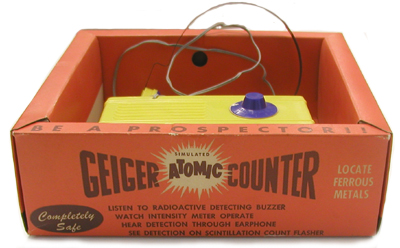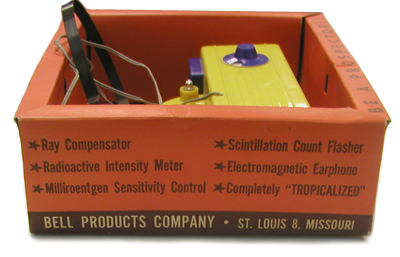Toy Geiger Counter by Bell Products (1955-1956)
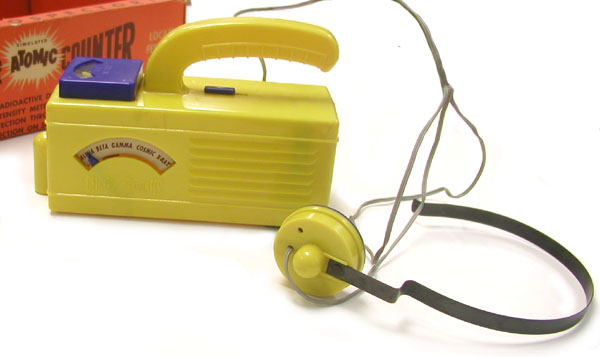
This "Atomic Geiger Counter" was produced by the Bell Products Company of 4251 Forest Park Avenue, St. Louis Missouri. The earliest reference I have seen to it is from June of 1955. It was described in one newspaper advertisement (Racine Journal-Times, September 4, 1955) as follows:
"Here's the toy that created a sensation at the National Toy Show. This amazing toy actually locates ferrous metals—simulates radioactivity detection. For the youngster who wants to be a prospector, the Atomic Geiger Counter comes complete with a stock certificate, mining license, claim stake, registration card and prospectus."
Another ad, you have to love this, described it as an "authentic replica."
The retail price in 1955 was $3.95, but by 1956 the geiger counter was going for as little as $0.88. This suggests that it was only produced for one or two years.
In the photo at the top of the page you can see the "Ray Compensator" control on the side of the case. It is supposed to be set to the desired type of radiation.
Quoting the instructions:
"The Atomic Geiger Counter is a toy, and is completely safe. It does not detect uranium or any other radioactive ore."
"However, it is an educational toy which familiarizes the child (and the parent) with certain basic ideas and procedures of real uranium prospecting, by simulating radioactivity detection."
"This Geiger Counter operates, in principle, similarly to the real Geiger Counter, but is activated by any object made of ferrous metal (any object containing iron)."
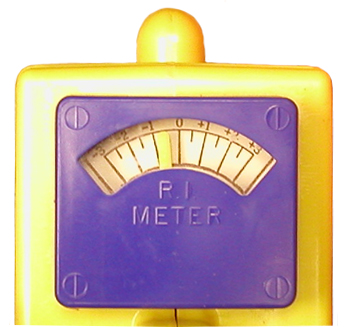
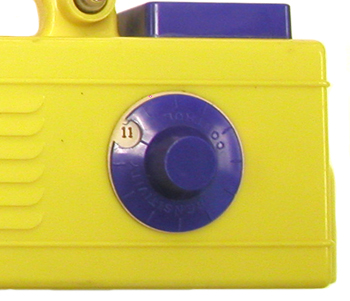
The photo above left is a close-up of the "Radioactive Intensity" (RI) meter, while the photo above right shows the "Milliroentgen Sensitivity Control." Note that the amp is turned up to eleven!
The cylindrical projection on the front end of the meter case is supposed to represent the GM probe, but it is referred to as the "Ferrous Probe." The reason is that the device actually responds to ferrous metals! A "hit" is indicated by the "scintillation count flasher" turning on, a deflection of the radioactive intensity meter needle, and a buzzing in the headphones! Pretty darn good. It even comes with a thin metal disk—a non-radioactive version of a check source.
